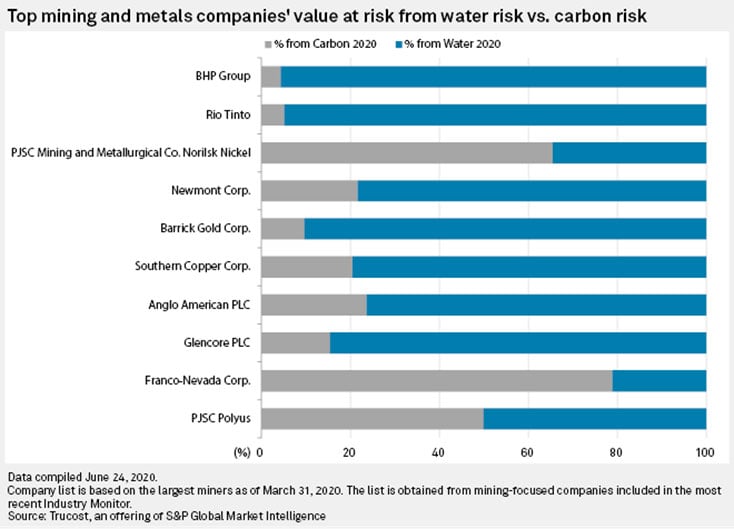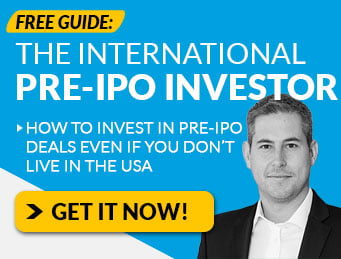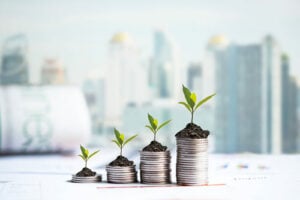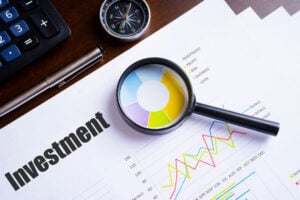On October 4th, 2021, 28 of the world’s top mining companies made a shocking announcement that could substantially change the industry forever…
According to a recent press release from the International Council on Mining & Metals:
“we collectively commit as members of the International Council on Mining and Metals (ICMM) to a goal of net-zero Scope 1 and 2 greenhouse gas (GHG) emissions by 2050 or sooner in line with the ambitions of the Paris Agreement.”
And the implications of this statement could have profound impacts on the decarbonization of a significant portion of the global supply chain.
But for investors looking to get in on true ESG mining investments, are there any real solutions for tackling the real problems?
Or is it just a marketing gimmick to capture a piece of the $30 trillion of assets in search of ESG (Environmental, Social, and Governance guidelines) investments?
ESG, GHG, and ROI
In order to understand the ESG movement, we have to first unpack some of the terms people use to describe goals and objectives.
First, let’s talk about Greenhouse Gases (GHG).
According to the Environmental Protection Agency (EPA), “Gases that trap heat in the atmosphere are called greenhouse gases.”
The main culprits? Carbon dioxide (CO2), Methane (CH4), Nitrous oxide (N2O), and Fluorinated gases:
Total U.S. Emissions in 2019 = 6,558 Million Metric Tons of CO2 equivalent (excludes land sector).
Each gas’s effect on climate change depends on three main factors:
- How much is in the atmosphere?
- How long do they stay in the atmosphere?
- How strongly do they impact the atmosphere?
Without going way too deep into the weeds here on how all this works, the short version is this: The general consensus is that GHGs are bad and we need to do something about it.
The GHG Protocol Corporate Accounting and Reporting Standard classifies corporate GHG emissions into three ‘scopes’.
- Scope 1 emissions are direct GHG emissions from operations that are owned or controlled by the reporting company
This includes emissions from fuel consumed by haul trucks and drilling equipment at mine sites
- Scope 2 emissions are indirect emissions from the generation of purchased energy consumed by a company
This includes emissions from electricity that mining companies buy from the grid for use at mine sites (like generators).
- Scope 3 emissions are all other indirect emissions (not included in Scope 2) that occur in the value chain of the reporting company
This includes emissions from all upstream and downstream activity.
Upstream emissions are indirect GHG emissions related to purchased or acquired goods and services.
For example, the emissions that come from producing equipment mining companies buy.
It also includes things like business travel and employee commuting.
Downstream emissions are indirect GHG emissions related to sold goods and services.
For example, a coal mining company sells coal to someone who then burns it as a fuel source.
Now that we’ve got that out of the way, let’s unpack the most recent news on Net-Zero Mining.
As we’ve discussed in earlier editions of this newsletter, the paradox of climate change is that “Clean Tech” requires the currently dirty business of mining.
According to Conor Bernstein, spokesperson for the National Mining association.
“Mining is the front-end of the supply chain for every energy technology we use.
The technologies critical to our economy — energy technologies included — are only more minerals and metals intensive than ever before, using elements that stretch the full breadth of the periodic table.”
The 2015 Paris Agreement on climate change aims to limit global warming this century to under 2 degrees C above pre industrial levels, and ideally to 1.5 degrees. Hitting that target will require substantial decarbonization down entire supply chains.
That’s why decarbonizing mining activities is one of the key problems that must be solved to realize a truly Net-Zero world.
And more importantly, for investors, it could mean a noticeable impact on returns.
According to Trucost research, which analyzed mines owned by the top 20 miners by market capitalization, showed that on average, 11% of the mines’ profits could be at risk by 2025 due to potential increases in carbon regulation costs and higher water costs due to changes in climate.
The companies could seek to pass on increased cost to their customers, which would drive up commodity prices, dampen demand and reduce revenue.
Which brings us to the critical question. How will mining companies meet GHG targets while attempting to deliver investor returns?
According to James Whiteside, research director and global head of multicommodity research at Wood Mackenzie:
“Mining companies are increasingly addressing emissions by lowering exposure to fossil fuels, localizing supply chains, increasing technological innovation and recycling more materials”
But making the shift to sustainable mining practices is about more than just the “E” in ESG.
And even though this issue isn’t new to the mining industry, there is no company that stands out as the undisputed leader in ESG performance.
However, one of the companies listed on Equifund Crowd Funding Portal, Durango Gold, is looking to change that.
If you’re not familiar with Durango Gold, their entire corporate strategy is based on something called “Shared Values.”
And according to CEO Fernando Berdegué…
Our “Shared Values” philosophy is at the core of our business. It could potentially give us a competitive advantage, and it’s the right way to do business.
Instead of thoughtlessly extracting resources with no care for the environment… we choose to create a network of people and an ecosystem from local communities through education that supports the objective of the company…
And that may increase the probabilities of exploration success while improving the regional general state of wellbeing.
We seek to add value to the environment in an attempt to extract a greater shareholder value.
His goal with Durango Gold is to discover what’s known as a “World Class Deposit” – or a mine capable of producing more than 10 million ounces of gold (or gold equivalent) metals.
Not only would it be a boon for investors if they can find – and profitably develop – a World Class Deposit…
But if they did it with an ESG focused strategy, it could be the success story the mining industry needs in order to change their ways.
If you’d like to learn more about Durango Gold – and what likely needs to happen in order for them to IPO in 2022 – be sure to check out the recent interview we hosted with Fernando Berdegué right here.
If you don’t have the full hour and 44 minutes, you can also download a copy of my interview notes to skim through by clicking here.
Sincerely,
Jake Hoffberg – Publisher
Equifund



